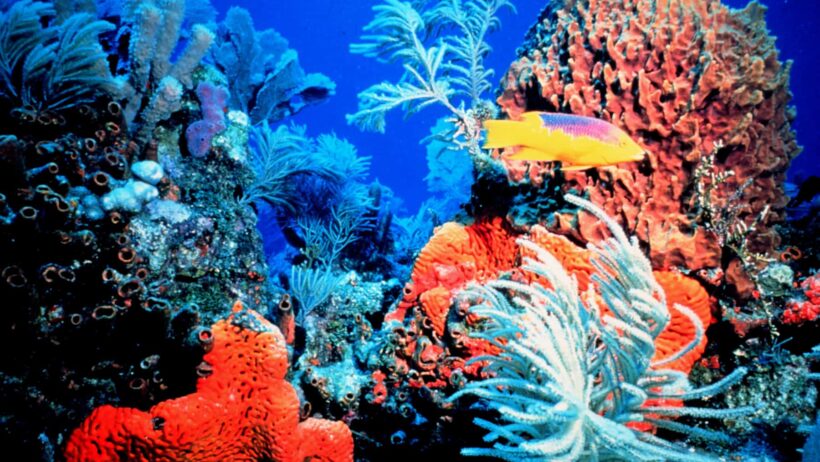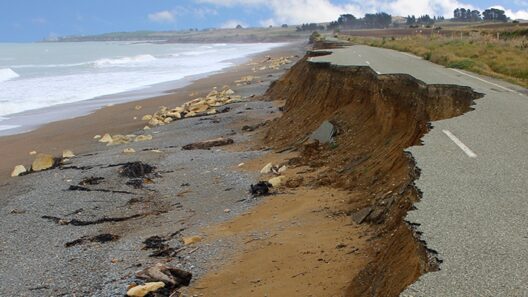Coral reefs are often referred to as the “rainforests of the sea,” representing some of the most vibrant and diverse ecosystems on the planet. They serve as multifaceted sanctuaries for countless marine species, providing not only shelter but also sustenance and breeding grounds. Yet, this breathtakingly beautiful underwater architecture is facing a dire crisis—a situation that has been prophesied but is now manifesting before our own eyes as global warming wreaks havoc upon these oceanic jewels.
As the Earth’s temperature rises, the delicate balance that sustains coral reefs is being thoroughly disrupted. This is not merely a phenomenon; it is an environmental cataclysm. The intricate relationship between corals and the symbiotic algae known as zooxanthellae is paramount. These minuscule denizens live within the coral’s tissues and provide them with essential nutrients through photosynthesis, while receiving shelter and carbon dioxide in return. In an ecosystem that appears resilient yet is subtly frail, any alteration can have profound ramifications.
The phenomenon of coral bleaching is the most visible consequence of global warming. Elevated sea temperatures lead to the expulsion of stricken zooxanthellae from the corals, resulting in a stark loss of color—their vibrant hues fading into an insipid white. This is akin to an artist’s masterpiece being reclaimed by a stark canvas, stripped of its vivacity. Coral that experiences bleaching becomes vulnerable, as it loses not only its color but its nutritional lifeline, plunging it into a state of stress and eventual death if conditions do not improve rapidly.
Moreover, the ramifications extend far beyond the reefs themselves. As keystones of marine biodiversity, coral reefs support approximately 25% of all marine species. Many fish, mollusks, and crustaceans that inhabit these ecosystems are integral to the global food web. The destruction of coral reefs, hence, sends ripples through the marine environment and into human economies dependent on fishing and tourism. This economic impact is profound, threatening the livelihoods of millions who rely on reefs for their sustenance and income, placing a heavy burden on coastal communities worldwide.
Ocean acidification, a byproduct of increased carbon dioxide absorption by seawater, exacerbates the existing challenges facing coral reefs. As CO2 levels rise, the pH of ocean water decreases, making it more acidic. This shift in chemistry inhibits the corals’ ability to metabolize calcium carbonate, which is critical for their skeletal growth. The reefs, once fortresses of biodiversity, begin to weaken, eroding and ultimately succumbing to the pressures of their changing environment. Picture a castle crumbling under siege; this is the fate that awaits without swift intervention.
The degradation is not only ecological; it is a poignant affront to cultural heritage and identity for many coastal populations. Numerous communities derive their sense of place, identity, and philosophy from their relationships with the ocean and its creatures. The loss of coral reefs is akin to the erasure of a shared story—a narrative intertwined with love, tradition, and belonging. Thus, the destruction of these ecosystems resonates deeply within human culture, emphasizing that their preservation is not merely about environmentalism but about safeguarding human heritage as well.
Furthermore, the conservation of coral reefs demands a nuanced understanding, one that promotes resilience against the tides of change. Measures such as establishing marine protected areas (MPAs) can alleviate some pressure. These no-take zones allow ecosystems to recover, providing safe havens for various species while fostering biodiversity. Techniques such as coral gardening, in which fragments of resilient coral species are cultivated and transplanted to damaged areas, show promise as well. Such initiatives highlight the essential role of human dedication in nurturing these ecosystems back to health, akin to a gardener tending to a wilting flowerbed.
Innovations in technology have also brought forth new avenues for preserving coral reefs. Advances in remote sensing and drone technology enable scientists to monitor reef health in real-time, identifying changes and threats with remarkable precision. This data-driven approach empowers conservationists to act promptly and effectively, a testament to the coexistence of technology and nature. Directors of the narrative can take proactive stances rather than simply being reactive—a vital shift in the collective consciousness surrounding climate action.
Yet, it remains imperative to confront the root causes of climate change with vigor. Addressing the challenges posed by global warming demands a concerted global effort to reduce greenhouse gas emissions. Transitioning to renewable energy sources, enhancing energy efficiency, and advocating for sustainable transportation must become priorities if we are to salvage our coral reefs. Each action counts; each voice raised in support of environmental policies reverberates like a wave against an eroding shore.
In conclusion, the fight to save coral reefs is emblematic of the broader struggle against global warming. These ecosystems are not merely resources to be exploited; they are priceless treasures deserving of conservation and respect. The beauty and diversity of coral reefs represent the interconnectedness of life itself, forming a vital tapestry that binds marine habitats and human cultures. As stewards of this planet, the responsibility falls upon humanity to cherish and protect the shimmering jewels of the ocean, ensuring a legacy of vitality for generations to come. Without immediate and concerted action, we risk watching the final breaths of these resplendent ecosystems slip into the abyss of extinction. Time is not a luxury; it is a pressing urgency that demands our collective resolve.







